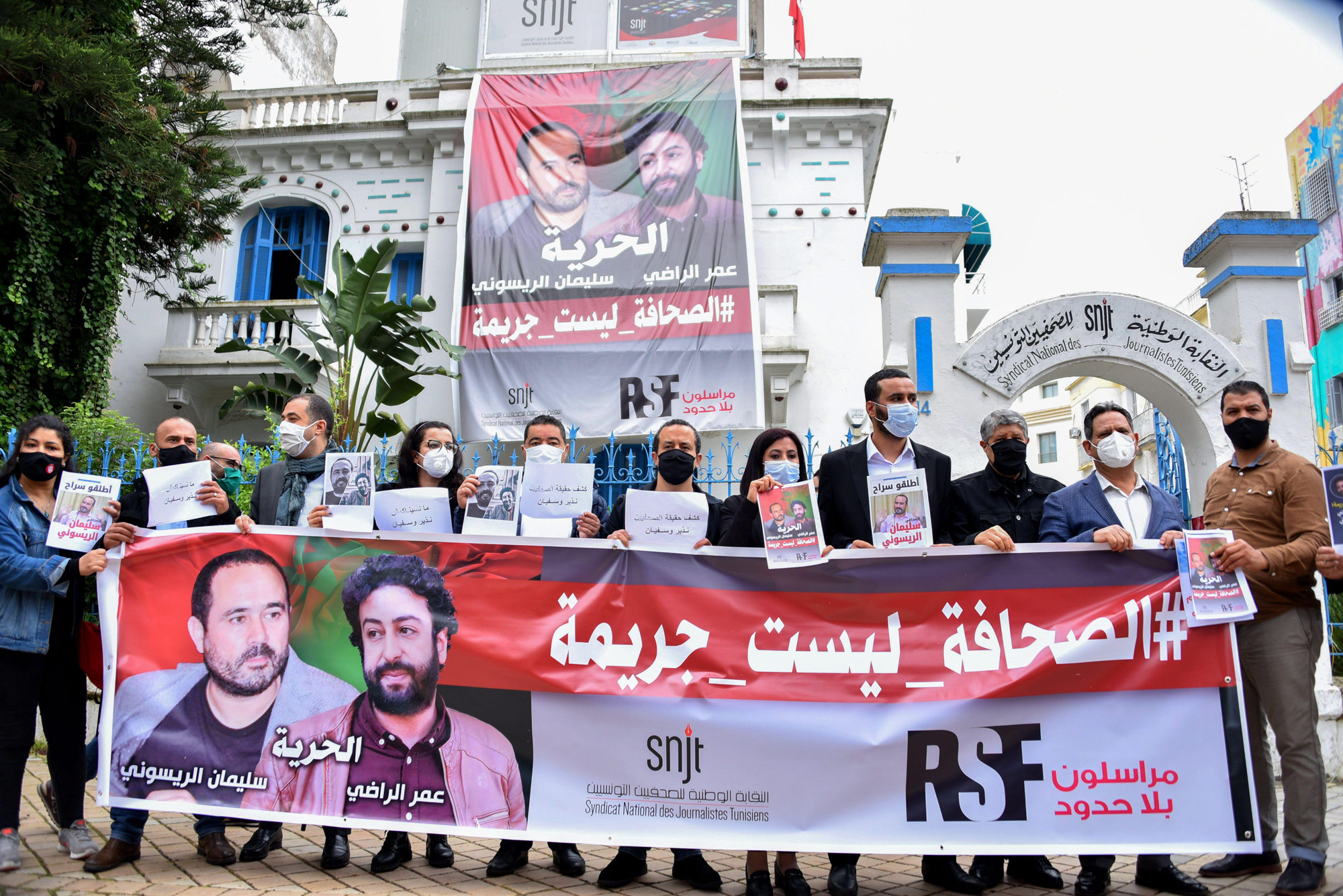As press freedom deteriorates in Morocco, journalists face credibility attacks from fake Facebook accounts and government-aligned news outlets.
By Chris Tenove
Omar Radi likely knew his arrest was coming on July 29, 2020. For years, the state-aligned media had attacked Radi, one of only a few Moroccan journalists openly critical of the regime. Five days prior to Radi being taken into custody on questionable charges including undermining state security by receiving foreign funding and collaborating with foreign intelligence, and rape, the media outlet Chouf TV published an article calling for his arrest. This and other articles denouncing Radi were enthusiastically shared and liked by Facebook users. Some added comments calling Radi a “cursed traitor,” a “spy” and a “sellout.”
But many of these Facebook accounts were not what they seemed to be. An investigation by the US-based DFRLab, working with the Global Reporting Centre and Simon Fraser University’s Disinformation Project, identified a network of 43 Facebook accounts that used fake profiles, synchronized messaging, and other tactics as part of a coordinated online campaign to malign Omar Radi. In response to this investigation, Meta — Facebook’s parent company — took down the 43 accounts in May 2022.
Radi was not the only Moroccan journalist facing this kind of harassment. The same network of 43 accounts also amplified an online campaign against Soulaimane Raissouni, editor-in-chief of the independent newspaper Akhbar al-Youm. Like Radi, Raissouni faced attacks from Chouf TV and other state-aligned news outlets before and after his arrest in May, 2020. Both journalists are now in prison on what the Committee to Protect Journalists (CPJ) reports to be “trumped up sexual assault and ‘morals’ charges” following trials that violated due process standards. DFRLab published our team’s investigative report, which provides details about the situation.

Online smear campaigns used to stifle press freedom in Morocco
The online campaigns against Moroccan journalists occurred against a backdrop of declining press freedom in the country, according to CPJ and Reporters Without Borders. Radi, Raissouni, and five other Moroccan journalists are believed to have been targeted with spyware along with several human right activists and dissidents critical of the government.
Our joint investigation shows how social media platforms are used as tools to silence voices critical of the Moroccan government, and reveals how fake Facebook accounts are used to promote misleading and spurious claims about journalists. It also found:
- Many accounts in the network used stock photos for Facebook profile pictures, “liked” each other’s identical posts, and posted similar content in close or identical time spans, including posts that amplified articles from state-aligned media sources.
- The network targeting Radi and Raissouni also posted derogatory or misleading messages about human rights defenders, opposition politicians, and dissident YouTubers.
- Meta took action on the 43 accounts identified by our investigation after determining they were linked to a previous network of 385 accounts, six Facebook pages, and 40 Instagram accounts that Meta deplatformed in February 2021.
- Accounts in the network also posted misleading and spurious claims about efforts by Amnesty International and the Pegasus Project to expose the use of surveillance technologies to spy on journalists, human rights activists, and other critical voices.
This collaborative investigation is part of a larger Global Reporting Centre project examining efforts to discredit and harass journalists globally. We have partnered with the Committee to Protect Journalists and PEN Canada, along with the DFRLab, and Simon Fraser University’s Disinformation Project. If you would like to be notified when we release our findings in 2023, you can stay in the loop by subscribing to our newsletter.

